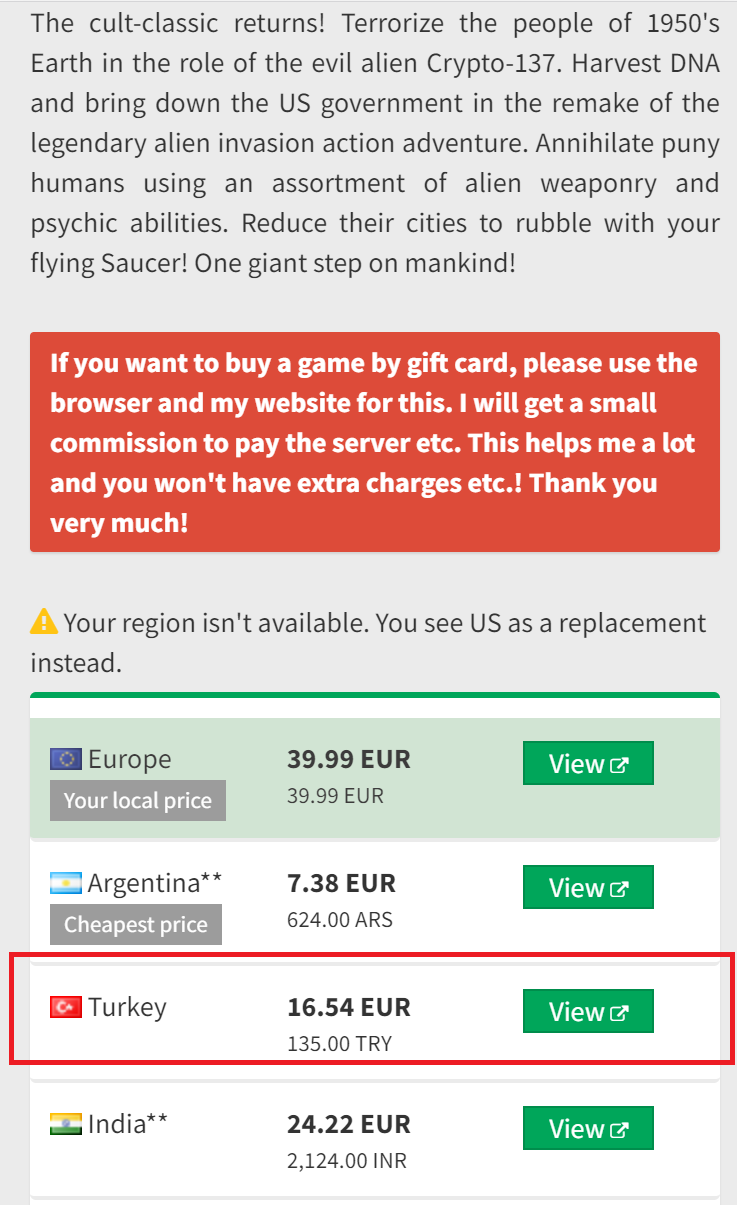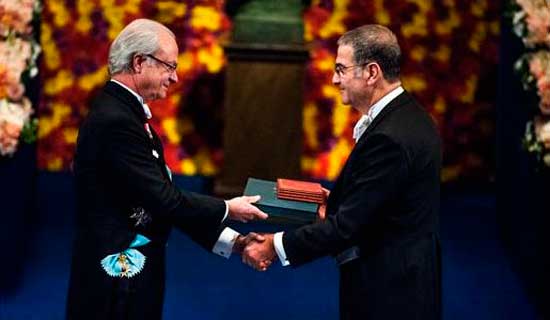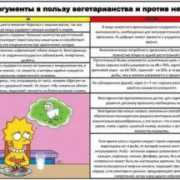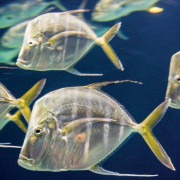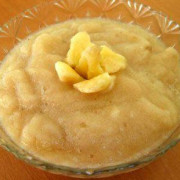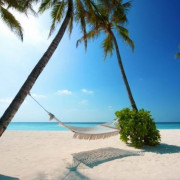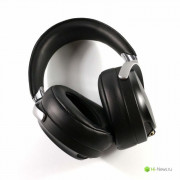Journal staff
Содержание:
- Nature
- What the community says
- Nature открывает бесплатный доступ ко всем статьям журнала
- References
- Publication
- Useful research
- 2.0 How to use the Nature Index website
- 4.0 The Nature Index journals
- Критика
- Latest supplement
- Nature Index 2020 South Korea
- Nature Index 2020 Annual Tables
- Research highlights of partners
- 5.0 Regions
- Editorial
Nature
Один из самых старых и авторитетных общенаучных журналов. Публикует исследования, посвящённые широкому спектру вопросов, в основном естественно-научной тематики.
Журнал ориентирован на научных работников, однако в начале каждого издания публикуется краткое популярное изложение важнейших публикаций. В колонке редактора и разделе «Новости» (News Articles) сообщается о событиях, интересных специалистам во всех областях. Остальная часть журнала состоит из оригинальных исследований, предполагающих наличие у читателя специальных знаний в соответствующей области.
Первый номер журнала был издан 4 ноября 1869 года. Основатель журнала — астроном Норман Локьер (Norman Lockyer). До этого, наиболее уважаемыми считались журналы Лондонского королевского общества, где публиковались статьи Исаака Ньютона, Майкла Фарадея, Чарльза Дарвина.
Публикации журнала считаются крайне престижными, в силу частого цитирования статей, авторы которых, таким образом, получают широкую известность. Поэтому критерии отбора статей в Nature чрезвычайно жестки и большинство статей отсеиваются еще до рецензирования. Именно в Nature впервые были опубликованы статьи о ряде исторических достижений науки, таких, как открытие рентгеновских лучей, волновой природы электрона, нейтрона, деления атомного ядра, спиральной структуры ДНК, о создании первого лазера, обнаружении озоновой дыры, о первом опыте клонирования, о расшифровке генома человека.
В 2007 году журнал (вместе с журналом Science) получил премию принцессы Астурийской (Premios Princesa de Asturias). В 2009 году журнал вошел в опубликованный Special Libraries Association список 100 самых влиятельных журналов биологии и медицины за последние 100 лет (100 most influential journals of Biology & Medicine over the last 100 years) под № 1 и был назван «журналом столетия». В 2010 году Journal Citation Reports поставило Nature на первое место по цитируемости.
Nature редактируется в Великобритании издательством Nature Publishing Group (Великобритания) и издаётся в Лондоне. У журнала есть также офисы в Нью-Йорке, Сан-Франциско, Вашингтоне, Токио, Париже, Мюнхене и Бэсингстоуке.
По мнению Лауреата Нобелевской премии по медицине 2013 года Рэнди Шекмана, стремление увидеть свою публикацию в ведущих научных журналах побуждает ученых «срезать углы» и заниматься модным, а не важным для науки. Кроме того, редакторы этих журналов — не ученые, а издатели. Таким образом, по мнению Шекмана, журналы мешают научному прогрессу.
Тираж — около 53 000 копий, количество читателей составляет 424 000 человек — в среднем, одну копию читают восемь человек.
С 2012 года существует арабское издание журнала.
Главный редактор — Филип Кэмпбелл (Sir Philip Henry Montgomery Campbell)
What the community says
-
Associate Professor
Nanotechnology research and development has been rising on a sharp slope across virtually all scientific disciplines
and industries. The result has been a rapidly growing body of information in disparate places that is not readily
and efficiently accessible. Researchers need a multidisciplinary database that brings this vast body of data together
in an organized and usable way in one place. Working together with other scientists to develop a research solution
that can meet this need has made me confident that this is a product that could deliver huge value to the research
community -
Chief Technology Officer
Nano is an emerging and very powerful research tool. It allows researchers to obtain and compare the characteristics
of the full spectrum of nanomaterials, as well as the composition and preparation methods for nano-enabled devices.
It will provide nano-scientists with the clarity and deep understanding that the Mendeleev table once provided to
chemists. -
Prof. em. Dr. Harald F. Krug
Consultant
NanoCASE GmbH
Retired Member of the Board of Empa
Swiss Federal Laboratories for Materials Science & Technology and Emeritus of the University of Berne, Switzerland
Nanomaterials are the important source for a multitude of new developments in all scientific disciplines. They offer
not only research possibilities but also markets for the industry. On the other hand regulators and the society are
facing a new group of “chemicals” which may contribute to health and environmental risks. This is clearly perceivable
in the steadily increasing number of publications in the field of nanotoxicology. Here only intelligent databases
can help to find the needed information in the overwhelming amount of knowledge. In this regard “Nano” is a very helpful
and constructive tool, which goes far beyond toxicological aspects and covers every topic related to nanotechnology. -
Yogendra Kumar Mishra, PD Dr. habil.
Group leader at Functional Nanomaterials Chair
Institute for Materials Science, Kiel University
Current materials science is witnessing the development of a large variety of nanomaterials, understanding their detailed
structure-property relationships, and testing them in all kinds of applications ranging from healthcare to space. Relevant
results and data by researchers from interdisciplinary communities are being published in thousands of articles. The community
definitely requires a specialized database like Nano. The clear data structure and useful functionalities in Nano helps researchers
and students to exactly learn ‘What-is-what & what is state-of-the-art in Nanotechnology!
Nature открывает бесплатный доступ ко всем статьям журнала
Доступ ко всем научным статьям, опубликованным в журнале Nature, будет открыт для подписчиков и СМИ в режиме для чтения без возможности скачивания, как объявил 2 декабря издатель журнала Macmillan’s Nature Publishing Group в своем пресс-релизе.
Все статьи Nature и еще 48 изданий, включая Nature Genetics, Nature Medicine and Nature Physics, станут доступны для чтения в специальном режиме, не позволяющем скачать, скопировать или распечатать статью. Полный доступ к материалам для библиотек и частных лиц при этом останется платным.
Представители институтов и других организаций получат доступ к статьям, опубликованным с 1869 года, подписчики-частные лица смогут читать материалы, опубликованные не ранее 1997 года. Ссылкой на PDF-файл можно будет также поделиться на своей странице.
Для просмотра статей будет использоваться платформа ReadCube, основным инвестором которой также является Macmillan. Эта система даст возможность сохранять статьи для последующего чтения, подобно тому, что это делается с музыкальными файлами при скачивании в iTunes.
Nature и его журналы-спутники до этого момента позволяли ученым делиться публикацией с коллегами, но только спустя полгода после публикации. Кроме того, статьи в некоторых журналах публиковались сразу на условиях так называемого «золотого открытого доступа». Новый уровень открытости, по словам издателя, поможет развитию сотрудничества между учеными и, в целом, развитию науки.
References
- «Nature». 2019 Journal Citation Reports. Web of Science (Science ed.). Clarivate Analytics. 2020.
- ^
- ^ , p. 3
- ^ , p. 7
- ^ , p. 6
- ^ , p. 13
- ^ , p. 248
- , p. 247
- ^
- ^
- Reprinted as:
- Rhodes, Richard (1986). The Making of the Atomic Bomb. New York: Touchstone. ISBN 978-0-671-44133-3.
-
Henry Gee, ed. (2008). . New York City: Tor Books. ISBN 978-0-7653-1805-3. Retrieved 10 August 2012.
With stories from: Arthur C. Clarke, Bruce Sterling, Charles Stross, Cory Doctorow, Greg Bear, Gregory Benford, Oliver Morton, Ian R. MacLeod, Rudy Rucker, Greg Egan, Stephen Baxter, Barrington J. Bayley, Brian Stableford, Frederik Pohl, Vernor Vinge, Nancy Kress, Michael Moorcock, Vonda McIntyre, Kim Stanley Robinson, John M. Ford and eighty more.
- Partington, John S. (2008). H. G. Wells in Nature, 1893–1946: A Reception Reader. Frankfurt: Peter Lang. ISBN 978-3631571101.[][page needed]
Publication
Nature Materials, a specialized journal from Nature Research, 2018.
The journal has a weekly circulation of around 53,000 and a pass-along rate of 8.0,[citation needed] resulting in a readership of over 400,000.[citation needed]
Nature is edited and published in the United Kingdom by a division of the international scientific publishing company Springer Nature that publishes academic journals, magazines, online databases, and services in science and medicine. Nature has offices in London, New York City, San Francisco, Washington, D.C., Boston, Tokyo, Hong Kong, Paris, Munich, and Basingstoke. Nature Research also publishes other specialized journals including Nature Neuroscience, Nature Biotechnology, Nature Methods, the Nature Clinical Practice series of journals, Nature Structural & Molecular Biology, Nature Chemistry, and the Nature Reviews series of journals.[citation needed]
Since 2005, each issue of Nature has been accompanied by a Nature Podcast featuring highlights from the issue and interviews with the articles’ authors and the journalists covering the research. It is presented by Kerri Smith, and features interviews with scientists on the latest research, as well as news reports from Nature’s editors and journalists. The Nature Podcast was founded – and the first 100 episodes were produced and presented – by clinician and virologist Chris Smith of Cambridge and The Naked Scientists.[citation needed]
In 2007, Nature Publishing Group began publishing Clinical Pharmacology & Therapeutics, the official journal of the American Society of Clinical Pharmacology & Therapeutics and Molecular Therapy, the American Society of Gene Therapy’s official journal, as well as the International Society for Microbial Ecology (ISME) Journal. Nature Publishing Group launched Nature Photonics in 2007 and Nature Geoscience in 2008. Nature Chemistry published its first issue in April 2009.[citation needed]
Nature Research actively supports the self-archiving process and in 2002 was one of the first publishers to allow authors to post their contributions on their personal websites, by requesting an exclusive licence to publish, rather than requiring authors to transfer copyright. In December 2007, Nature Publishing Group introduced the Creative Commons attribution-non-commercial-share alike unported licence for those articles in Nature journals that are publishing the primary sequence of an organism’s genome for the first time.
In 2008, a collection of articles from Nature was edited by John S. Partington under the title H. G. Wells in Nature, 1893–1946: A Reception Reader and published by Peter Lang.
After a 2015 merger, Nature Publishing Group dissolved and was afterwards known as Nature Research.[citation needed]
Useful research
But Baric and others say the research did have benefits. The study findings “move this virus from a candidate emerging pathogen to a clear and present danger”, says Peter Daszak, who co-authored the 2013 paper. Daszak is president of the EcoHealth Alliance, an international network of scientists, headquartered in New York City, that samples viruses from animals and people in emerging-diseases hotspots across the globe.
Studies testing hybrid viruses in human cell culture and animal models are limited in what they can say about the threat posed by a wild virus, Daszak agrees. But he argues that they can help indicate which pathogens should be prioritized for further research attention.
2.0 How to use the Nature Index website
2.1 Date range
The Nature Index website presents a 12-month rolling window of data. The window includes primary research articles from the Nature Index journals that are published in their final form during the 12-month period. The window is updated on a monthly basis. The date range is displayed in the top-right corner of all pages.
The annual tables are based on calendar-year output in the Nature Index journals. These are released annually and are based on output from 1 January to 31 December of the previous year.
2.2 Searching for a specific institution or country
You can search for a specific institution or country/region from the Nature Index homepage.
- Begin typing your query in the search box to generate a list of suggested institutions or countries.
- Select the institution or country/region.
- Click ‘Go’.
A Research Profile page will be generated that lists research outputs within the current 12-month date range by Count and Share ().
Research outputs are organized by subject area.
- Click on the subject area to drill-down into a list of outputs organized by journal, and then by article title.
- Click article titles to display article-level information including complete affiliation details, altmetric.com data and links to the version of record on the publisher’s website.
Selecting the Collaboration Profile page displays the institution’s or country’s patterns of publication collaboration, including a list of top collaborators.
2.3 Ordering research outputs by institution
You can generate a table of institutions ordered by research outputs.
- On the Nature Index homepage, click on the “Current index” tab, and choose “Institution tables” from the dropdown menu.
- At the dropdown menus under “Institution outputs”, choose the region or country of interest, filter by subject area or journal group, and select the sorting method.
- Click ‘Generate’.
Tables can be re-sorted by clicking on the column headings.
The order of output of institutions can differ significantly depending on the measure used to order them (Count and Share). There are many factors determining an institution’s output. The size of the institution is a major factor as is the composition of research specialities within an institution. The Nature Index does not attempt to normalize data for such factors. Rather it presents raw data that can be used as a basis for analysis.
2.4 Ordering research outputs by country
You can generate a table of countries ordered by research outputs.
- Click on the ‘Country output’ window on the Nature Index homepage.
- Using the drop-down menus, choose the region of interest, filter by subject area or journal group, and select the sorting method.
- Click ‘Generate’.
Tables can be re-sorted by clicking on the column headings.
4.0 The Nature Index journals
The current 12-month window on natureindex.com includes data from primary research articles from the following science journals:
- ACS Nano (1399 articles)
- Advanced Functional Materials (1479 articles)
- Advanced Materials (958 articles)
- American Journal of Human Genetics (157 articles)
- Analytical Chemistry (2177 articles)
- Angewandte Chemie International Edition (3335 articles)
- Applied Physics Letters (1883 articles)
- Astronomy & Astrophysics (22 articles)
- Cancer Cell (96 articles)
- Cancer Research (398 articles)
- Cell (365 articles)
- Cell Host & Microbe (150 articles)
- Cell Metabolism (128 articles)
- Cell Stem Cell (122 articles)
- Chemical Communications (3344 articles)
- Chemical Science (1176 articles)
- Current Biology (492 articles)
- Developmental Cell (185 articles)
- Earth and Planetary Science Letters (533 articles)
- Ecology Letters (173 articles)
- Environmental Science and Technology (1529 articles)
- European Physical Journal C (1026 articles)
- Genes & Development (83 articles)
- Genome Research (154 articles)
- Geochimica et Cosmochimica Acta (478 articles)
- Geology (261 articles)
- Geophysical Research Letters (1599 articles)
- Immunity (128 articles)
- Inorganic Chemistry (1770 articles)
- Journal of Biological Chemistry (1429 articles)
- Journal of Cell Biology (224 articles)
- Journal of Clinical Investigation (419 articles)
- Journal of Experimental Medicine (161 articles)
- Journal of Geophysical Research: Atmospheres (755 articles)
- Journal of Geophysical Research: Solid Earth (724 articles)
- Journal of High Energy Physics (2173 articles)
- Journal of Neuroscience (710 articles)
- Journal of the American Chemical Society (2687 articles)
- Macromolecules (1005 articles)
- Molecular Cell (320 articles)
- Molecular Psychiatry (257 articles)
- Monthly Notices of the Royal Astronomical Society: Letters (200 articles)
- Nano Letters (1303 articles)
- Nature (889 articles)
- Nature Biotechnology (125 articles)
- Nature Cell Biology (122 articles)
- Nature Chemical Biology (147 articles)
- Nature Chemistry (112 articles)
- Nature Climate Change (114 articles)
- Nature Communications (5723 articles)
- Nature Genetics (115 articles)
- Nature Geoscience (137 articles)
- Nature Immunology (105 articles)
- Nature Materials (173 articles)
- Nature Medicine (191 articles)
- Nature Methods (136 articles)
- Nature Nanotechnology (115 articles)
- Nature Neuroscience (163 articles)
- Nature Photonics (104 articles)
- Nature Physics (175 articles)
- Nature Structural & Molecular Biology (123 articles)
- Neuron (309 articles)
- Organic Letters (2114 articles)
- PLOS Biology (373 articles)
- PLOS Genetics (477 articles)
- Physical Review A (185 articles)
- Physical Review B (816 articles)
- Physical Review D (158 articles)
- Physical Review Letters (2672 articles)
- Physical Review X (251 articles)
- Proceedings of the National Academy of Sciences of the United States of America (3237 articles)
- Proceedings of the Royal Society B (553 articles)
- Science (670 articles)
- Science Advances (1592 articles)
- Science Translational Medicine (269 articles)
- The Astrophysical Journal Letters (604 articles)
- The EMBO Journal (197 articles)
- The ISME Journal: Multidisciplinary Journal of Microbial Ecology (229 articles)
- The Journal of Physical Chemistry Letters (1394 articles)
- The Plant Cell (176 articles)
- Water Research (903 articles)
- eLife (1647 articles)
Критика
Нобелевский лауреат по медицине 2013 года Рэнди Шекман при вручении ему премии заявил, что ведущие научные журналы, среди которых и Nature, мешают научному процессу, так как желание увидеть свою публикацию в ведущих журналах побуждает учёных «срезать углы» и заниматься тем, что считается модным, а не тем, что важнее для науки. Кроме того, по мнению Шекмана, проблема в том, что редакторы этих журналов являются не учёными, а издателями и их интересуют прежде всего шумиха, сенсация и фурор. Он пообещал больше не отправлять свои статьи в журналы Nature, Cell и Science.
Академик РАН Е. Д. Свердлов, кроме случая с Шекманом, также обращает внимание на инцидент с японскими учёными из Центра биологии развития Института физико-химических исследований (RIKEN), опубликовавшими в 2014 году в журнале две статьи с изложением итогов опытов над зрелыми клетками мышей, подвергавшихся различному роду стрессовых воздействий, включая погружение в кислоту — метод, получивший известность под названием «получение плюрипотентности, вызванной стимулом (англ.)русск.» (англ. stimulus-triggered acquisition of pluripotency, STAP), в ходе которых ими был обнаружен новейший способ преобразования клеток в эмбрионально-подобное (плюрипотентное) состояние. Данное исследование первоначально было высоко оценено мировым научным сообществом, поскольку являлось теоретическим и медицинским открытием и позволяло упростить получение стволовых клеток необходимых для пересадки
Однако в дальнейшем в ходе внутреннего расследования RIKEN было обнаружено, что Харуко Обокато (англ.)русск., являвшаяся ключевым лицом в группе исследователей, совершила крупный подлог с фотографиями и рисунками. Следствием этого стал отзыв публикаций и самоубийство научного руководителя исследования Ёсики Сасаи, решившегося на это чтобы сохранить лицо.
В 2018 году группа исследователей из США, Швеции, Новой Зеландии, Сингапура, Германии, Нидерландов и Китая под руководством психолога Б. Нозека (англ.) повторила эксперименты по общественным наукам, результаты которых были опубликованы в журналах Science и Nature в 2010—2015 годах, и выяснила, что из 21 эксперимента только 13 (62 %) прошли проверку на воспроизводимость.
Latest supplement
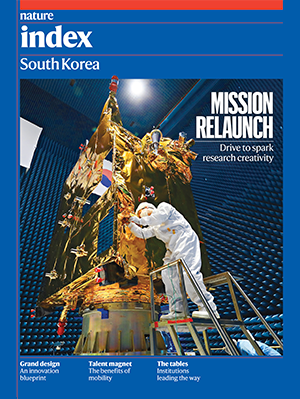
Nature Index 2020 South Korea
A concerted government push to make South Korea an innovation leader, backed by strong investment and systemic reform, has brought rapid and long-lasting results. The country’s scientific landscape is becoming more diverse and more productive, as a place where upwardly mobile researchers thrive.
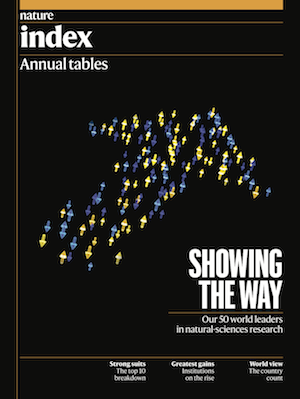
Nature Index 2020 Annual Tables
The Nature Index 2020 Annual Tables highlight the institutions and countries that dominated high quality research in the natural sciences in 2019 as tracked by Nature Index. This supplement features not only the Nature Index Global Top 50 institutions across all sectors, but also the Top 25 Rising Stars – the institutions that had the strongest growth in output since 2015. The rankings are based on an institution’s or country’s share of articles published in the 82 prestigious scientific journals selected by an independent panel of experts and tracked by the Nature Index database.
Curtin University
Discover the latest research from Ireland
Research highlights of partners
ShanghaiTech University
31 Jul 2018
Northwestern Polytechnical University (NPU)
28 Aug 2019
Nankai University (NKU)
23 Mar 2020
Sign up for the free weekly Nature Index newsletterSign up
5.0 Regions
-
- Algeria
- Angola
- Benin
- Botswana
- Burkina Faso
- Burundi
- Cameroon
- Cape Verde
- Central African Republic
- Chad
- Comoros
- Congo
- Djibouti
- Egypt
- Equatorial Guinea
- Eritrea
- Ethiopia
- Gabon
- Gambia
- Ghana
- Guinea
- Guinea-Bissau
- Ivory Coast
- Kenya
- Lesotho
- Liberia
- Libya
- Madagascar
- Malawi
- Mali
- Mauritania
- Mauritius
- Mayotte
- Morocco
- Mozambique
- Namibia
- Niger
- Nigeria
- Reunion
- Rwanda
- Sao Tome and Principe
- Senegal
- Seychelles
- Sierra Leone
- Somalia
- South Africa
- Sudan
- Swaziland
- Tanzania
- Togo
- Tunisia
- Western Sahara
- Uganda
- Zambia
- Zimbabwe
-
- Australia
- Bangladesh
- Bhutan
- Brunei
- Cambodia
- China
- Cook Islands
- East Timor
- Fiji
- French Polynesia
- India
- Indonesia
- Japan
- Kiribati
- Laos
- Malaysia
- Maldives
- Marshall Islands
- Micronesia
- Mongolia
- Myanmar
- Nauru
- Nepal
- New Zealand
- Niue
- North Korea
- Palau
- Papua New Guinea
- Philippines
- Samoa
- Singapore
- Solomon Islands
- South Korea
- Sri Lanka
- Taiwan
- Thailand
- Tokelau
- Tonga
- Tuvalu
- Vanuatu
- Vietnam
- Wallis and Futuna Islands
-
- Albania
- Andorra
- Armenia
- Austria
- Belarus
- Belgium
- Bosnia and Herzegovina
- Bulgaria
- Croatia
-
- Cyprus
- Czech Republic
- Denmark
- Estonia
- Faroe Islands
- Finland
- France
- Germany
- Greece
- Hungary
- Iceland
- Ireland
- Italy
- Kosovo
- Latvia
- Liechtenstein
- Lithuania
- Luxembourg
- Macedonia
- Malta
- Moldova
- Monaco
- Montenegro
- Netherlands
- Norway
- Poland
- Portugal
- Romania
- Russia
- San Marino
- Serbia
- Slovakia
- Slovenia
- Spain
- Sweden
- Switzerland
- Ukraine
- United Kingdom (UK)
- Vatican City State (Holy See)
-
- Antigua and Barbuda
- Aruba
- Bahamas
- Barbados
- Belize
- Canada
- Costa Rica
- Cuba
- Dominica
- Dominican Republic
- El Salvador
- Greenland
- Grenada
- Guadeloupe
- Guatemala
- Haiti
- Honduras
- Jamaica
- Martinique
- Mexico
- Netherlands Antilles
- Nicaragua
- Panama
- Saint Kitts and Nevis
- Saint Lucia
- Saint Vincent and The Grenadines
- St. Pierre and Miquelon
- Trinidad and Tobago
- United States of America (USA)
-
- Argentina
- Bolivia
- Brazil
- Chile
- Colombia
- Ecuador
- Guyana
- Paraguay
- Peru
- S. Georgia and S. Sandwich Isls.
- Suriname
- Uruguay
- Venezuela
-
Western Asia
- Armenia
- Afghanistan
- Azerbaijan
- Bahrain
- Georgia
- Iran
- Iraq
- Israel
- Jordan
- Kazakhstan
- Kuwait
- Kyrgyzstan
- Lebanon
- Oman
- Palestine
- Pakistan
- Qatar
- Saudi Arabia
- Syria
- Tajikistan
- Turkey
- Turkmenistan
- United Arab Emirates
- Uzbekistan
- Yemen
Editorial
Editor in Chief: Magdalena SkipperNature Editorial Director (Journals): Ritu Dhand
Head of Editorial Policy (Nature Research): Sowmya SwaminathanChief Magazine Editor: Helen PearsonChief Biology Editor: Francesca CesariChief Physical Sciences Editor: Karl ZiemelisCreative Director: Kelly Buckheit KrauseManaging Editor: Colin Sullivan
This Week/News/Features: Celeste Biever, Declan Butler, Ewen Callaway, Davide Castelvecchi, Rachel Courtland, David Cyranoski, Nisha Gaind, Elizabeth Gibney, Flora Graham, Heidi Ledford, Brendan Maher, Smriti Mallapaty, Amy Maxmen, Richard Monastersky, Anna Nagle, Nicky Phillips, Quirin Schiermeier, Kerri Smith, Emma Stoye, Nidhi Subbaraman, Jeff Tollefson, Richard Van Noorden, Traci Watson, Alexandra Witze, Lauren Wolf.
Comment: Sara Abdulla, Joanne Baker, Rosalind Cotter, Monya Baker, Juliane Mössinger, Lucy Odling-Smee.
News and Views: Andrew Mitchinson, Mary Abraham, Jennifer Gardiner.
Research: Victoria Aranda, Anna Armstrong, I-han Chou, Tanguy Chouard, Rosamund Daw, Alex Eccleston, Angela Eggleston, Luke Fleet, Véronique Gebala, Henry Gee, Noah Gray, Claire Hansell, Marie-Thérèse Heemels, Magdalena Helmer, Xujia Jiang, Bryden Le Bailly, Federico Levi, Barbara Marte, Leslie Sage, Sadaf Shadan, Mary Elizabeth Sutherland, Clare Thomas, Christina Tobin Kåhrström, Vesna Todorovic, Michelle Trenkmann, John VanDecar, Ursula Weiss, Michael White, Yang Xia
Insights/Reviews/Perspectives: Ursula Weiss
Careers: David Payne, Karen Kaplan, Jack Leeming
Nature Podcast/Video: Noah Baker, Shamini Bundell, Nick Howe, Dan Fox, Benjamin Thompson
Supplements: Herb Brody, Catherine Armitage, Mohamed Ashour, Bec Crew, Richard Hodson, Smriti Mallapaty
Technology Editor: Jeffrey Perkel
Subeditors: Paul Fletcher, Anna York, Rachel Jones, Sarah Archibald, Nicola Bailey, Joanna Beckett, Emma Brown, Sarah Farley, Isobel Flanagan, Joanna Franklin, Anne Haggart, Dinah Loon, Mark McGranaghan, Hannah McFarlane, Anna Novitzky, Adrian Read, David Ribé, Jenny Rooke, Chariklia Rouki, Francisca Schultz, Ashley Stevenson
Art and Design: Wesley Fernandes, Agnese Abrusci, Michael Ayres, Lizzy Brown, Jennifer Burns, Jessica Hallett, Amelia Hennighausen, Tom Houghton, Paul Jackman, Jasiek Krzysztofiak, Chris Ryan, Nik Spencer, Claire Welsh
Production: Yvonne Strong, Donald McDonald, Nick Bruni, Hima Bhatt, Susan Gray, Simon Gribbin, Hazel Mayhew, Ian Pope, Stephen Russell
Press Office: Alice Henchley, Rebecca Walton, Lisa Boucher, Xi Chen, Sarah Hausman, Isobel Lisowski, Sarah McClenaghan, Michael Stacey
Japan Edition: Eiji Matsuda, Mitsuyo Utsugi, Sayaka Ayame, Natsuko Izumi
Nature Digital: Alexander Thurrell, Jonathan Austin, Marta Rolak, Dipti Shah, Luke Stavenhagen
Administration: Roseann Campbell, Laura Cottam, Mary Craig, Katherine Haley, Isabelle Hughes, Wendy McDonald, Valerie Pullin, Linda Robitaille, Krishna Sharma, Lyaina Vitalis, Rebecca Wild, Danielle Yates

